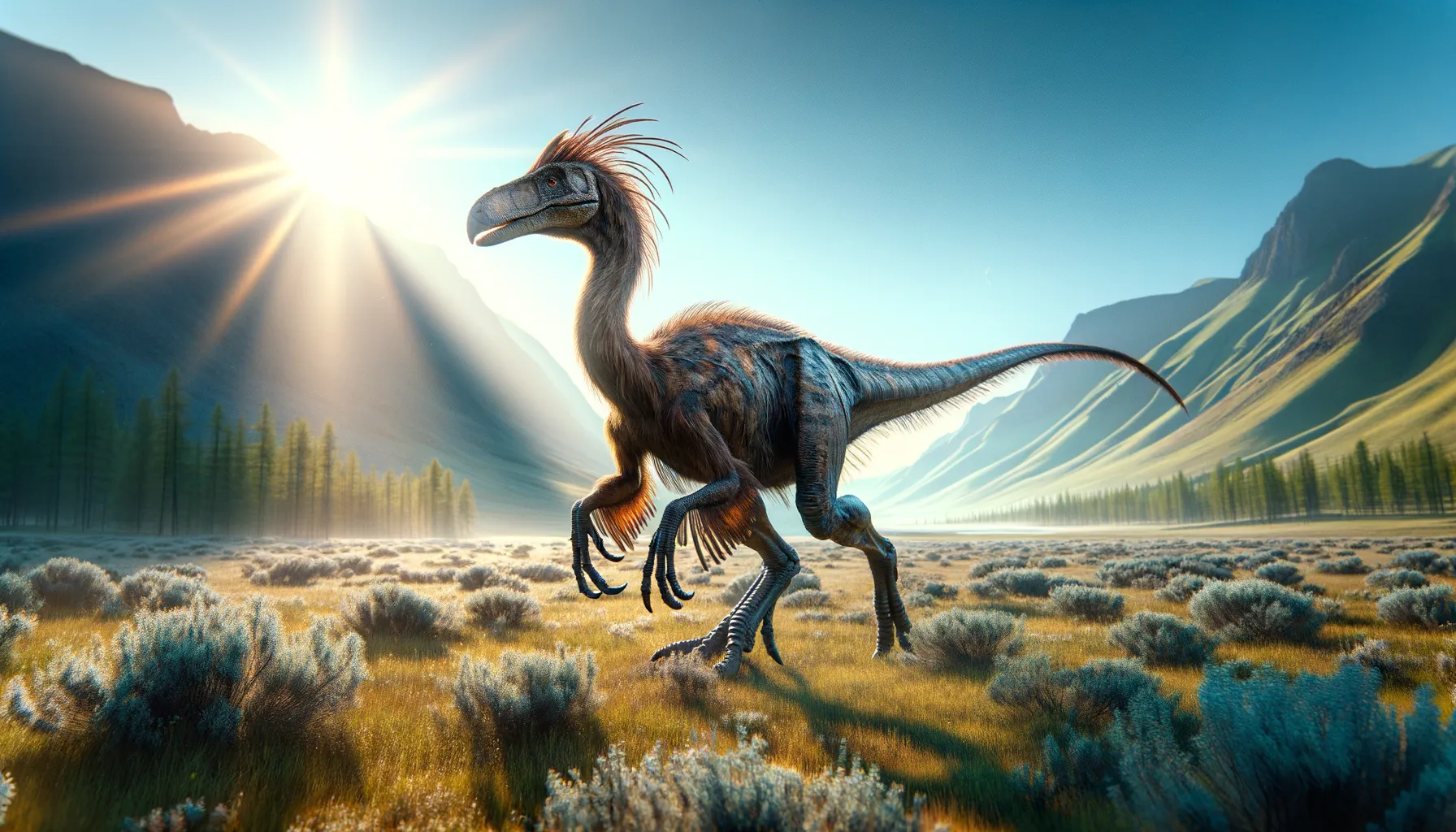
Avimimus
Quick and nimble, a runner of ancient lands.
Period
Cretaceous
Length
It measured around 1.5 to 2 meters in length.
Height
Avimimus stood about 1.5 meters tall at the hip.
Weight
It weighed approximately 15 to 30 kilograms.
Avimimus was a small, bird-like theropod dinosaur known for its lightweight and agile frame. Discovered in Mongolia, it lived around 70 million years ago during the Late Cretaceous period. This dinosaur possessed features such as a beaked mouth and long legs, suggesting it was an adept runner. Its name, meaning 'bird mimic,' reflects its striking similarities to modern-day birds, especially in terms of its skeletal structure and potential feather-like coverings.
Diet
Avimimus was likely an omnivore, feeding on a mix of plants, insects, and small vertebrates. Its beak suggests it could peck at vegetation and invertebrates efficiently.
Hunting
Though not a predator in the traditional sense, Avimimus may have used its speed to catch small prey like insects. It likely scavenged for food as well, enjoying a varied diet to sustain its rapid lifestyle.
Environmental challenges
Living in the Late Cretaceous meant facing dynamic climates, including harsh seasons and potentially arid landscapes. Avimimus would have needed to adapt to seasonal changes in food availability. Staying alert to predators while maintaining access to resources in its environment was crucial for survival.
Speed
Avimimus was swift and nimble, capable of running at high speeds.
Lifespan
Its lifespan likely ranged from 10 to 20 years.
First discovery
Avimimus was first discovered in Mongolia in 1981.
Fun Facts
- Avimimus, whose name means 'bird mimic,' was a small, bird-like dinosaur that lived about 70 million years ago in what is now Mongolia.
- It was feathered, like many of its close relatives, which suggests it might have been warm-blooded and had a fast metabolism.
- Avimimus walked on two legs and was quite fast, which helped it escape predators and hunt for food.
- Despite being a dinosaur, Avimimus had some notable bird-like features, such as a beak and possibly a wishbone, making it an early link between dinosaurs and birds.
- Avimimus was an omnivore, feasting on plants, small animals, and possibly even eggs, showcasing a diverse diet.
- The dinosaur was relatively small, measuring around 1.5 meters (approximately 5 feet) in length, making it one of the more petite dinosaurs.
- Some scientists believe Avimimus might have been capable of short bursts of flight or gliding, making it even more bird-like.
Growth and Development
The rapid growth phases typical of theropods suggest Avimimus developed quickly to reach maturity. During growth, it would focus on developing its speed and agility. Evidence suggests their skeletal structure adapted early on to support high-energy lifestyles.
Habitat
Avimimus inhabited areas that were likely open forest or semi-arid, indicating a degree of adaptability. Its habitat would have supported sufficient plant life and small animals, providing ample resources. Movement across this terrain would have been easy thanks to its nimble build.
Interaction with other species
Avimimus likely coexisted with a variety of other dinosaur species. It might have needed to evade larger predators and could have competed with other small dinosaurs for food resources. Social behaviors could include forming small, possibly familial, groups.
Natural lifespan
Its natural lifespan could have been about 10 to 20 years.
Reproduction
Avimimus likely laid eggs, similar to birds and other theropods. Nests would be carefully constructed for safety and warmth. Parental care might have included guarding the nest and possibly feeding young as they hatched.
Social behaviour
These dinosaurs could exhibit social tendencies, such as forming small groups for foraging. Group dynamics might help in alertness to predators and better foraging efficiency. Leadership within groups could be simple, likely based on maturity or size.
Fossil locations
Fossils of Avimimus have been primarily found in Mongolia. These sites provide significant insights into its life and habitat. Such finds continue to offer crucial data for understanding its biology and ecology.
